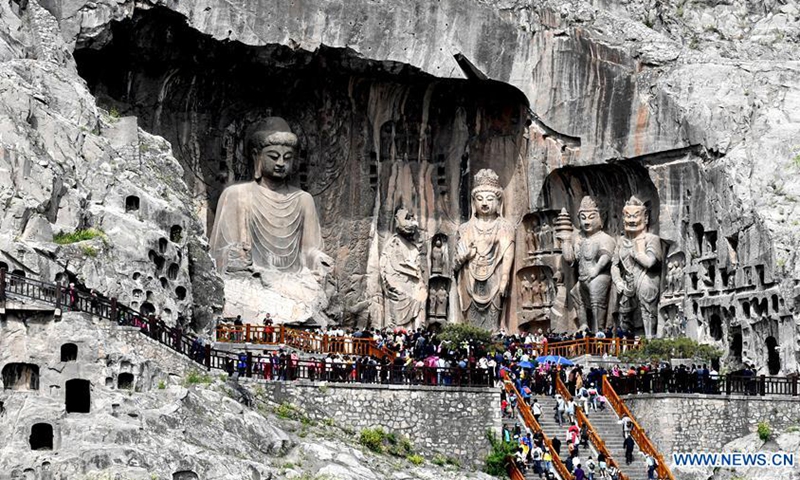Pagoda remains in central China thought to be Indian monk's tomb
Source: Xinhua Published: 2020/10/22 11:57:51

Tourists visit the Longmen Grottoes in Luoyang, central China's Henan Province, April 11, 2018. A total of 66 museums in various kinds are open to the public in Luoyang, a city with civilization history of over 5,000 years.Photo:Xinhua
Archaeologists have unearthed the foundations of a pagoda in central China's Henan Province that was likely the tomb of an eminent Indian Buddhist monk named Divakara who came to China during the Tang Dynasty (618-907).
The foundations were unearthed at Xiangshan Temple, part of the Longmen Grottoes site, a UNESCO World Heritage site in the city of Luoyang. The temple was built at the command of Wu Zetian (624-705), China's only empress, who was also a Buddhist.
"It is the first large-scale excavation of the Xiangshan Temple site. So far, we have excavated an area of 3,000 square meters and achieved important phased results," said Shi Jiazhen, director of the Longmen Grottoes Research Institute.
"In combination with documentary data, it is preliminarily speculated to be the tomb of the Indian monk Divakara, who entered China in the Tang Dynasty," Shi Jiazhen said
A large number of findings, including another pagoda foundation, stone sculptures, bronze Buddha statues and house relics, were also discovered.
"The cultural exchanges between China and India have a long history. During the Tang Dynasty, the cultural exchanges between the two reached their peak. There was good dialogue and interaction between Buddhism and other cultural elements, and this archaeological excavation proves it," Shi said.
Posted in: CULTURE & LEISURE,ARTS FOCUS